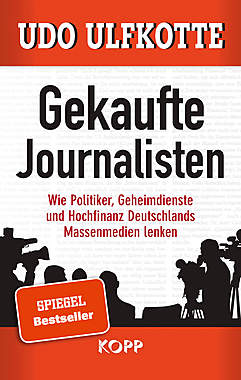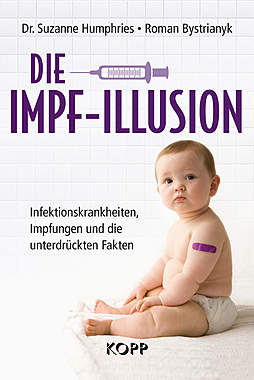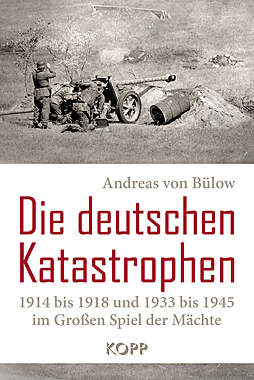>>>Ganz einfach.
>>>Er fragt die Leute nicht, wohin die Kurse ihrer Meinung nach gehen, sondern er fragt, wie sie investiert sind. (>Wenn er nun weiÃ, dass 61% der Leute im Markt sind, dann fragt er sich: Wie soll die breite Masse denn jetzt einsteigen? Die sind doch schon eingestiegen...
>>>Ein Tief bzw. Turnaround kÃķnnte im Moment nur entstehen, wenn schlicht und einfach KaufauftrÃĪge bzw. LiquiditÃĪt im Markt wÃĪre. LiquiditÃĪt wÃĪre im Markt, wenn die Masse der Marktteilnehmer bearisch wÃĪre. Dann hÃĪtten Sie nÃĪmlich BestÃĪnde verkauft.
>>
>>xxx Ich muà mir erstmal das Buch von Goldberg besorgen, offenbar ist er doch ganz gut. Meine Zweifel gingen in die Richtung wie man das Sentiment messen kann. Aber Goldberg fragt gezielt nach der aktuellen Positionierung (vgl. auch den Link zu RÞdiger MaaÃ, elliottwaver.de er schreibt genau das gleiche Þber die DevisenhÃĪndler). Wer bullisch ist hat bereits gekauft, die Nachfrage entfÃĪllt schon mal.
>>Ich denke, in den letzten Monaten ist das PCR wieder ein recht guter Kontra-Indikator. Gibt aber bessere. Ich persÃķnlich schwÃķre auf die Preisstellung der OS-Emitenten. Im ganzen BÃĪrmarkt seit 03/00 waren grundsÃĪtzlich noch die Calls zu teuer im gegensatz zu den Puts. Erst wenn dies umkehrt, kÃķnnte ein Boden kommen.
>>xxx Wie kann man das am besten messen. Maximum hurt? Oder gibt es andere MÃķglichkeiten.
>>Gruà AndrÃÂĐ
>Von maximum hurt halte ich nicht so viel. Meine Idee basiert auf dem Vergleich der impliziten VolatilitÃĪten bei Calls und Puts (jeweils mit gleicher Laufzeit und gleich weit aus dem Geld, also verschiedene Basis-Preise). Beispiel: Bei einem DAX-Stand von 6.200 mÞsste ein 6.000er Put etwas teurer sein als ein 6.400er Call (weil Crash-Szenarien wahrscheinlicher sind als Blow-Off-Szenarien). Naja, ich will das hier nicht vertiefen. Ich beobachte halt genau, was die CitibÃĪnker so handeln. Bei Eurex-Optionen klappt es nicht; ich tippe, weil hier bei zu hohen Preisen automatisch geshortet wird (geht ja bei OS nicht)
>GruÃ
>ThomasW
xxxxxxxxxxxxxxxxxxxxxxxxxxxxxxxxxxxxxxxxxxxxxxxxxxxxxxxxxxxxxxxxxxxxxxxx
Hallo Thomas W. & Black Elk,
meint ihr vielleicht den"Ansbacher Index"???????????????ÃÃ
Gruà OOO
UNDERSTANDING THE ANSBACHER INDEX
Broadcast to a national audience every other Friday at 10:08 AM Eastern time on Bloomberg Financial
television and presented to options professionals worldwide by"Futures and Options World," the
Ansbacher Index is an indicator of the bullish or bearish sentiment of options traders which can be useful in
forecasting the future direction of the stock market. This sentiment is measured by comparing the price of a
put approximately 30 points below the current price of the Standard & Poorâs 100 Index (OEX) with the price
of a call the same amount above the OEX. The price of the put is then divided into the price of the call to
obtain the current Ansbacher Index.
How It Works
A 1.00 reading of the Index is neutral. Readings between 0.80 and 1.20 are regarded as essentially neutral. A
figure less than 0.80 is regarded as bullish for the stock market with the Index becoming more bullish as the
number decreases. An Index of over 1.20 is bearish, with the Index becoming more bearish as it moves
higher.
The relevance of the Index to future moves in the stock market is based upon the contrarian theory that
when most people are bullish, the stock market is likely to go down; when they are bearish, it is likely to go
up. This is ascribed to the fact that when a person is really bullish, the investor has already bought all the
stock and calls he or she is likely to buy and, therefore, there is not much more the person can do to cause
the market to rally. If, however, the market goes down, there is a lot of selling the investor will probably do
which will intensify the downturn. The reverse is true when a person is really bearish.
In The Ansbacher Index, the higher the price of the put is compared to the price of the call, the lower The
Index will be. For example, if a put were 2 and the call were 1, The Index would be 0.5. If the put and call were
equal, The Index would be 1.0, and if the put were 1 and the call 2, The Index would be 2. Thus, the more
people are willing to pay for puts, which is a way of indicating that they are bearish, the lower The Index will
be and, based upon the contrarian theory, the more bullish The Index is.
Calculating The Index
To calculate The Index, one starts with the current price of the OEX. Then one goes down approximately 30
points to the put with a strike price at that level. Then one goes up 30 points from the OEX and finds the
price of the call there. Next, divide the price of the put into the price of the call. The options which have
between three and seven weeks left until their expiration are the ones which are used.
Past performance is not necessarily indicative of future results. The risk of loss exists in futures trading.
Here is a simplified example: OEX is 800. Going down 30 points, we come to the 770 put which is 2 1/8. Going
up 30 points, we come to the 830 call, which is 1 Âū. All fractions. All fractions must be converted to
decimals: 2 1/8 = 2.125; 1 Âū = 1.75. We then divide 1.75 by 2.125, obtaining 0.82, which is within the neutral
band although, since it is below 1, it does have a bullish bias.
In an actual example, the OEX is unlikely to be exactly 30 points away from a strike price, which requires
another step. Letâs assume that the OEX is 801.50, that the 730 put is still 2 1/8, the 830 call is now 2, and the
835 call is 1 1/8. By going down 30 points from the OEX, we arrive at 771.5, which is not the strike price of
any put; but it is nearest to the 770 put, so we will use that put at 2 1/8. Note that we had to come down 31.5
points to get there. Now, when we want to find the appropriate call, we must add the same amount to the
OEX as we subtracted to get to the put. In other words, to keep the index accurate, we must go exactly as far
up for the call as we went down for the put.
Adding 31.5 to 801.50 gives us 833.00. Of course, there is no 833 strike price call. What we must now do is to
compute what the price would be if there were such a call. We do this by taking the appropriate average of
the actual calls which are above and below this figure. Here the 830 call is 2, and the 835 call is 1 1/8 (1.125).
To calculate the approximate value of a 833 call, we subtract the difference between the two prices: 2 minus
1.25 = 0.875. Divide this by 5: 0.875/5 = 0.175. This is the average change in the price of the call for each one
point change in the callâs strike price. This figure is then multiplied by the amount by which our theoretical
strike price is above the strike price of the lower call. Here we are looking for an 833 theoretical strike price.
The lower call is an 830; the difference is 3. Multiply 3 by 0.175 = 0.525. This is then subtracted from the price
of the lower call. Here that is 2 minus 0.525 = 1.475. This is the price of a call with a theoretical strike price of
833, which is exactly the same amount above the OEX as the 770 put was below it.
Now we can find The Ansbacher Index by dividing the price of the theoretical 833 call, 1.475, by the price of
the 870 put, 2.125. The result, 1.475, divided by 2.125 = 0.69, which is bullish.
Rolling Out to the Next Month
One problem which arises if one keeps a record of The Index week after week is that the number of weeks left
in the optionâs life has an impact on the result. The near-term options are likely to be more extreme in their
reading, whether they are bullish or bearish, whereas the further out readings will be closer to neutral.
Therefore, when one moves out from one month to the next, there is likely to be a large change in The Index.
In order to smooth this out, we must constantly take readings further out each week. Hereâs how this is
done: Letâs assume that we are seven weeks away from an expiration date and we are using January options.
The following week, instead of using only January options, we compute the Index using both the January
and February options. Then we combine the two numbers, giving a 75% weight to the January figure and
bringing in the February figure with a 25% weighting. The following week, we decrease the weighting of the
shorter-term options by 25% to 50% and we increase the weighting of the further out option by 25% to 50%.
This continues each week so that the next week the January is weighted only 25% and the February is
weighted 75%.
This method of constant forward rolling reduces the large changes which occur when one month is used for
four weeks and then scrapped for the next month. Once a quarter, there is no change to allow for the fact
that there are 52 weeks in the year rather than 48.
Past performance is not necessarily indicative of future results. The risk of loss exists in futures trading.
Gruà OOO
PS: weià aber auch nichts nÃĪheres dazu, z.B. wo er abzufragen ist, etc.
<center>
<HR>
</center> |
 Thread-Ansicht
Thread-Ansicht

